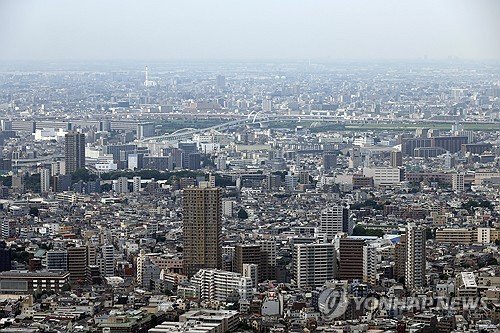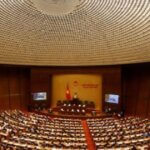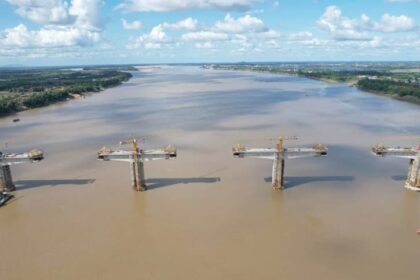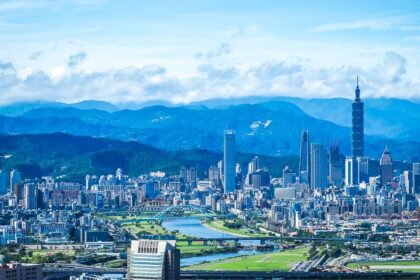Japan’s Land Prices Surge: The Tourism Boom Behind the Real Estate Rise
Japan is experiencing a remarkable surge in land prices, marking the fastest pace of increase in over three decades. This trend is being driven primarily by a boom in inbound tourism, which is transforming not only the country’s major cities but also regional and rural areas. As foreign visitors flock to Japan in record numbers, the demand for hotels, shops, and accommodation is pushing land values to new heights, reshaping the nation’s real estate market and local economies.
- Japan’s Land Prices Surge: The Tourism Boom Behind the Real Estate Rise
- How Inbound Tourism Is Fueling Land Price Growth
- Tourist Hotspots: Where Land Prices Are Soaring
- Urban Redevelopment and the Osaka-Kansai Expo Effect
- Record-Breaking Land Prices in Major Cities
- Rural and Regional Areas: A Mixed Picture
- Economic and Social Implications: Opportunities and Challenges
- What’s Driving the Tourism Boom?
- Risks and the Road Ahead
- In Summary
How Inbound Tourism Is Fueling Land Price Growth
The Japanese government’s latest data reveals that average land prices nationwide rose by 2.7% as of January 1, 2025, the fourth consecutive year of gains and the fastest rate since 1991. This increase is not limited to the country’s urban centers; it is spreading to regional and even some rural areas, a phenomenon not seen since the early 1990s asset bubble era.
According to the Ministry of Land, Infrastructure, Transport and Tourism, the surge is closely linked to the influx of foreign tourists. In 2024, Japan welcomed an estimated 36.87 million visitors, the highest number since records began in 1964. These tourists spent over ¥8.1 trillion (about $53 billion), providing a significant boost to the economy. The weak yen has made Japan an attractive and affordable destination for many, further fueling the tourism boom.
Fumiko Watanabe, a researcher at the NLI Research Institute, notes:
“Areas popular among inbound tourists are expected to continue seeing the highest land price increases, as the number of visitors to Japan continues reaching record highs.”
This demand is especially pronounced in areas with popular tourist attractions, where the need for hotels, restaurants, and retail spaces is driving up both commercial and residential land values.
Tourist Hotspots: Where Land Prices Are Soaring
Some of the most dramatic land price increases have occurred in Japan’s most popular tourist destinations. For example, the ski resort village of Hakuba in Nagano Prefecture saw land prices jump by 32.4% in a single year, the highest rate nationwide. Furano in Hokkaido, another favorite among foreign visitors, experienced a 30.2% increase. In Tokyo, the Asakusa district—famous for its historic temples and bustling shopping streets—recorded a 29% rise, while Takayama in Gifu Prefecture, known for its preserved old town and traditional culture, saw a 28.3% increase.
These areas are not only attracting tourists but also investors and developers eager to capitalize on the growing demand for accommodation and services. In Takayama, for instance, the surge in foreign visitors has led to a near-complete occupancy of properties along the main tourist streets, with buyers quickly snapping up any available shops or inns. Tsunetada Minami, manager of the historic Sumiyoshi Ryokan inn, explains:
“We’re almost fully booked until September. International travelers are essential for the survival of our business.”
In Tokyo, the Kaminarimon-dori street in Asakusa saw the highest land price increase in the capital, reflecting the area’s popularity among foreign tourists who flock to events like the Sanja Festival and enjoy the vibrant atmosphere of Nakamise-dori shopping street.
Urban Redevelopment and the Osaka-Kansai Expo Effect
While tourism is a major driver, urban redevelopment projects are also playing a significant role in boosting land prices. The upcoming 2025 Osaka-Kansai Expo, set to be held on the artificial island of Yumeshima, has sparked a wave of speculation and investment in the surrounding areas. Even before the Expo’s opening, land prices around Yumeshima Station on the Osaka Metro Chuo Line rose by 18.2%, and the area near Bentencho Station saw an 11% increase.
Redevelopment proposals for large plots of land, such as the former site of a municipal high school near Bentencho, have attracted significant interest from developers. A city official commented:
“There is a lot of interest in the area, as it’s close to Yumeshima.”
Hotel operators in Osaka report that average room rates have increased by 30% year-on-year since the Expo opened, with a notable rise in visitors from Europe and the United States in addition to those from Asia. The Expo is serving as a powerful advertisement for Osaka, further enhancing its global appeal and driving up real estate values.
Record-Breaking Land Prices in Major Cities
Tokyo continues to lead the nation in terms of absolute land values. Ginza Chuo Street in the heart of Tokyo’s luxury shopping district has held the title of the most expensive land in Japan for 40 consecutive years. In 2025, the price reached a record 48.08 million yen (about $333,600) per square meter, up 8.7% from the previous year. This reflects not only the area’s enduring appeal to both domestic and international shoppers but also the broader trend of rising urban land values driven by tourism and redevelopment.
Other major cities are also seeing significant gains. Saitama City and Chiba City, both within commuting distance of Tokyo, recorded land price increases of 11.9% and 11.2% respectively, fueled by convenient transport links and ongoing development projects. In Fukuoka and Okinawa, popular for their resort areas, land prices rose by 6.0% and 6.3% respectively.
Rural and Regional Areas: A Mixed Picture
While the land price boom is most pronounced in urban and tourist-heavy areas, its effects are spreading to some rural regions for the first time in decades. Government data shows that more than half of surveyed rural areas saw land price increases, a phenomenon not observed in over 30 years. This is largely attributed to the spillover effects of tourism and, in some cases, the establishment of new industries such as semiconductor manufacturing.
For example, Chitose in Hokkaido, home to a growing semiconductor industry, saw commercial land prices rise by 48.8%. However, not all rural areas are benefiting. Regions facing population decline and limited commercial activity continue to see land values fall. The impact of natural disasters is also evident; Wajima in Ishikawa Prefecture, devastated by a major earthquake and subsequent fires, experienced a 16.7% drop in land prices—the sharpest decline in the country.
Economic and Social Implications: Opportunities and Challenges
The surge in land prices, driven by inbound tourism, presents both opportunities and challenges for Japan. On the positive side, the tourism boom is revitalizing local economies, creating jobs, and generating tax revenue. The construction of new hotels, restaurants, and retail spaces is stimulating the real estate and construction sectors, while increased tourist spending is boosting the service industry.
However, there are growing concerns about the negative side effects. Overtourism is straining infrastructure in popular destinations like Kyoto and Mount Fuji, making it difficult for locals to access public transport and enjoy their own cities. Rising land and accommodation prices are also making it harder for ordinary Japanese citizens to travel within their own country, as hotel rates soar to meet foreign demand.
JAPAN Forward highlights these challenges, noting that while the government aims to further increase tourist numbers and spending by 2030, careful management is needed to avoid negative impacts on residents’ quality of life. Issues such as overcrowding, property damage, and cultural friction have prompted calls for stronger legal frameworks and better visitor management strategies.
What’s Driving the Tourism Boom?
Several factors are contributing to Japan’s unprecedented tourism boom:
- Weak Yen: The depreciation of the Japanese yen has made the country an affordable destination for foreign visitors, especially from the United States, Europe, and Asia.
- Global Appeal: Japan’s unique blend of traditional culture, modern attractions, and natural beauty continues to attract tourists from around the world.
- Improved Infrastructure: Investments in transportation, accommodation, and tourist facilities have made it easier for visitors to explore even remote regions.
- Social Media and Events: The popularity of Japanese festivals, cuisine, and experiences is amplified by social media, drawing more international attention to local destinations.
At the same time, the government’s proactive efforts to ease visa requirements and promote tourism are expected to sustain the influx of visitors in the coming years.
Risks and the Road Ahead
Despite the positive momentum, experts caution that the land price boom may not be sustainable in all areas. Rising construction costs and the potential for higher interest rates could dampen demand, especially for residential properties. Japan’s aging and declining population also poses long-term challenges, as some regions may struggle to maintain economic activity once the initial tourism-driven surge subsides.
Yoshida Tasuku, a researcher at the NLI Research Institute, warns:
“These factors may discourage people from buying homes, which would have a negative impact on land prices.”
Policymakers and local governments are now tasked with balancing the benefits of tourism-driven growth with the need to protect residents’ interests and ensure sustainable development. This includes investing in infrastructure, managing visitor flows, and supporting local communities affected by rapid change.
In Summary
- Japan’s land prices are rising at the fastest pace in over 30 years, driven primarily by a boom in inbound tourism.
- Major tourist destinations like Hakuba, Furano, Asakusa, and Takayama have seen dramatic land price increases, with some areas recording gains of over 30% in a single year.
- Urban redevelopment projects, such as those linked to the 2025 Osaka-Kansai Expo, are further boosting land values in key cities.
- For the first time in decades, some rural and regional areas are also experiencing land price growth, though others continue to face declines due to population loss and natural disasters.
- The tourism boom is revitalizing local economies but also creating challenges such as overtourism, rising living costs, and social tensions.
- Experts warn that rising construction costs, higher interest rates, and demographic trends could pose risks to the sustainability of the land price surge.
- Japan’s government and local authorities are working to balance the economic benefits of tourism with the need to protect residents and ensure long-term stability.












